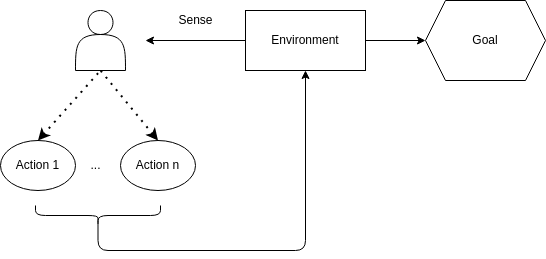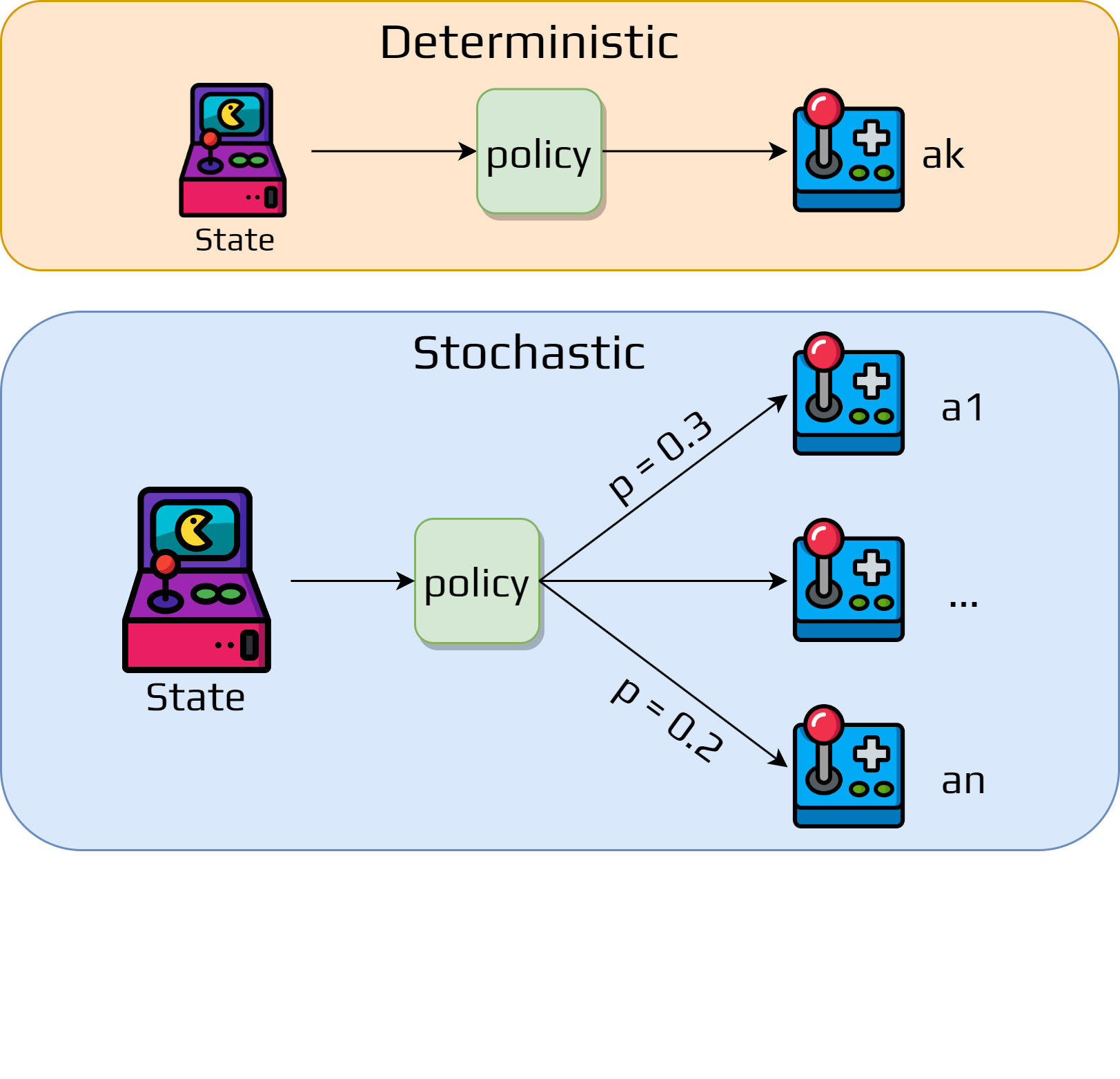1. Introduction
1.1. What is Reinforcement Learning (RL)?
Reinforcement learning is what to do to maximize a reward.
We can give a more “formal” definition.
Definition
Reinforcement Learning is calculating a function that maps situations to actions.
We said that we want to maximize a reward, but what is a reward?
Activity
Try to explain what a reward is.
To maximize a reward the learner can do different actions.
If the learner was passive, it could not maximize anything.
Usually, the learner start with no prior knowledge about what action it should do.
Activity
What would you do to maximize a reward if you had no idea which action you should do?
1.1.1. Key concepts
Reinforcement learnign has two main characteristics:
It use a trial-and-error type of search.
It has delayed rewards.
Warning
Reinforcement learning is a name that regroups different concepts:
It’s a type of problem.
It’s also a class of solution methods.
And it’s the field that study the two previous points as well.
You need to understand the distinction.
1.2. What is the Reinforcement learning problem? (Simplified)
The reinforcement learning problem is an idea coming from dynamical system theory.
And more specificaly from the Markov Decision Processes.
The basic ideas are:
A learning agent must sense the state of the environment.
The agent must be able to take actions that affect the state.
It must have a goal or goals relating to the state of the environment.

1.3. What is a Reinforcement learning method?
It is any methods that is well suited for solving RL problems.
Activity
Discuss why chess can be considered a reinforcement learning problem.
Try to define for chess the states, actions, and goal.
Why the goal must be related to the state?
1.4. What Reinforcement learning is not?
Supervised learning
Supervised learning is from a training set of labeled examples.
Each example describes a situation and the action to take in this situation.
The objective is to extrapolate/generalize from this set of examples.
However, in interactive problem it is impractical to obtain examples that are both correct and representative.
Unsupervised learning
Finding structure hidden in unlabeled examples.
You could think that is the same, because it doesn’t rely on examples of correct behaviors.
Activity
What is the difference?
1.5. The challenges of reinforcement learning.
Reinforcement learning has a lot of challenges:
Trade-off between exploration and exploitation
To obtain a lot of reward the agent must choose the action that it tried and found effective.
However, to discover such actions it needs to try previously unselected actions.
In the first case, we say that the agent exploit.
In the second we say that the agent explore.
You can neither do one or the other only, you need both.
Considering the whole problem:
Reinforcement learning consider the whole problem.
Start with a complete interactive, goal seeking agent.
Assumed that the agent has to operate despite uncertainty about the environment.
1.6. Elements of reinforcement learning
Activity
What are the two elements we talked about that compose reinforcement learning?
Reinforcement learning is also composed of:
A policy
A reward function
A value function
A model of the environment (optional)
Definition
A policy is a function that maps each state to an action.
It define the behavior of an agent at a given time.
It is the core of reinforcement learning agent, because it is sufficient to determine its behavior.
It can either be:
Deterministic
Stochastic

Definition
A reward is a value returned by the environment at a time step \(t\).
It defines the goal of a reinforcement learning problem.
Remember that the agent’s objective is to maximize the total reward it receives.
Definition
A value function is a function returning for each state the total expected reward starting from this state.
Activity
What is the difference between the reward and the value function?
Between the following state which one would you select?
\(s_1\): reward 100, value function 3
\(s_2\): reward 1, value function 5
We seek actions that lead us to states that bring higher value not higher reward.
Unfortunately, it is harder to determine the value than the reward.
Definition
The model of the environment is the representation of the dynamic of the problem.
For a given state and action, the model is able to predict the next state and next reward.
We consider two types of reinforcement learning methods:
Model-based
Model-free
1.7. Limitations
Reinforcement learning relies heavily on the concept of state.
It is the input of the policy and the value function.
We will not discuss how we design or model the state.
However, it has a great impact on the efficiency of the method.